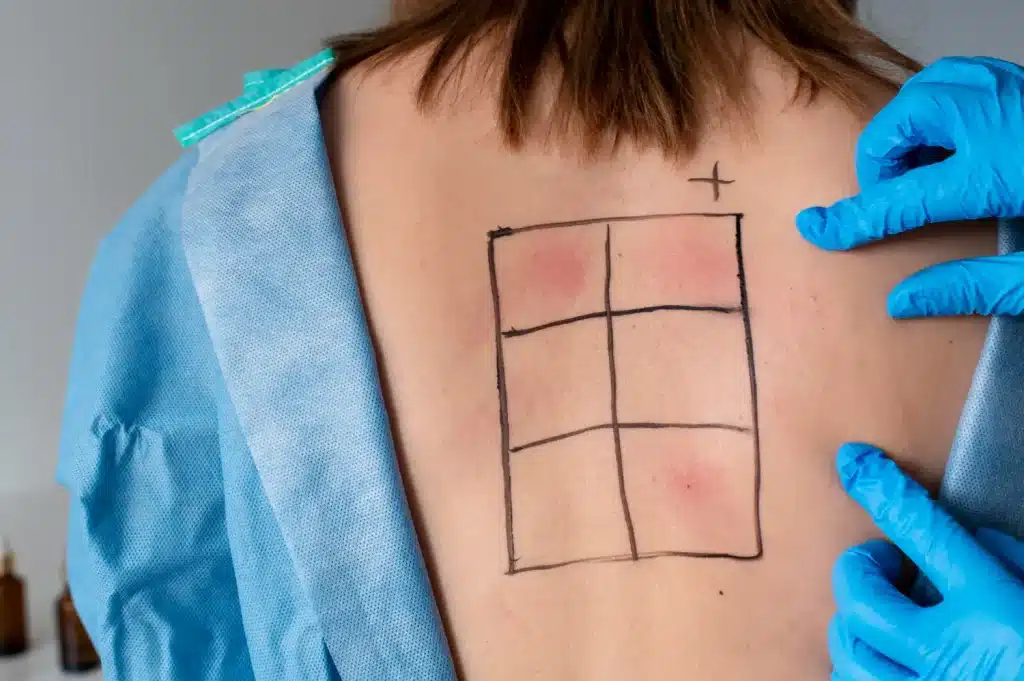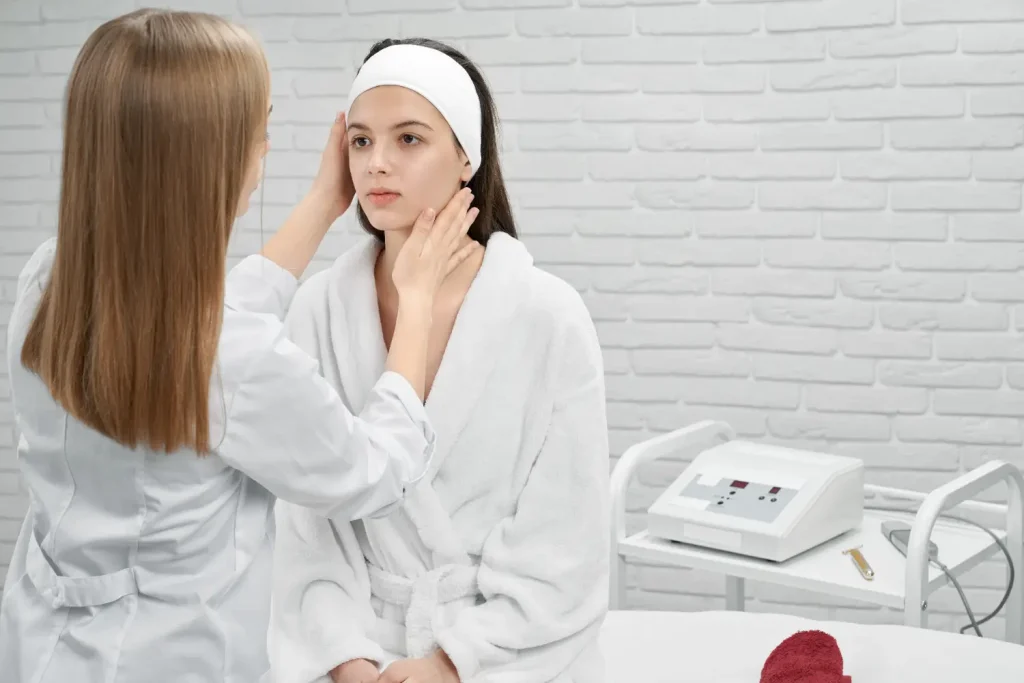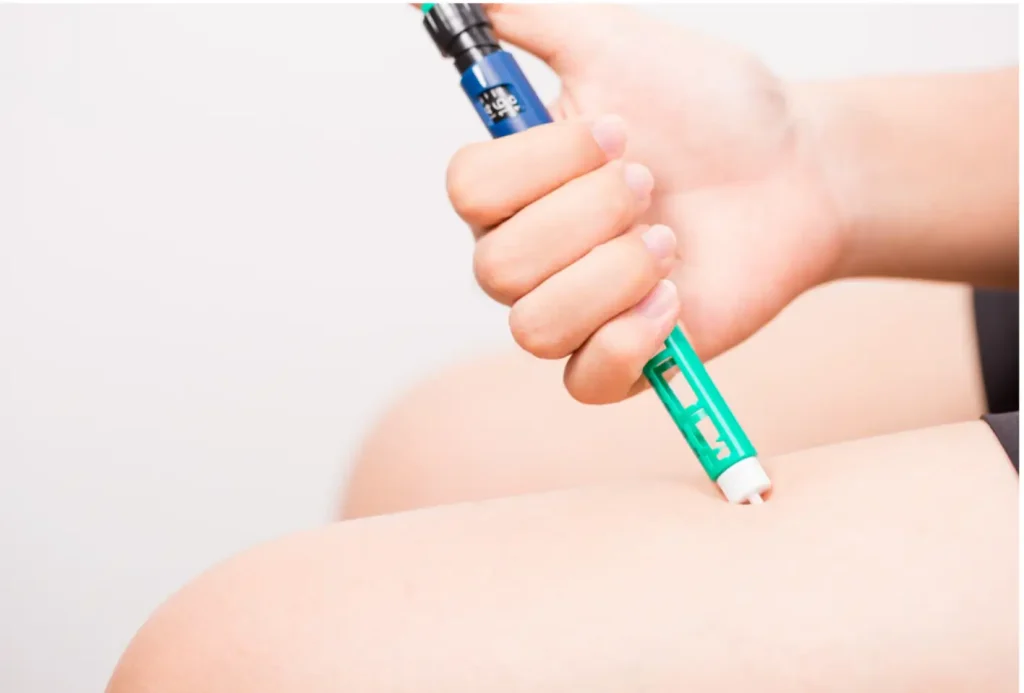Obesity often leads to fat accumulation in various parts of the body, including under the chin. According to research, excess weight contributes to the development of submental fat, commonly known as a double chin. This condition is influenced not only by overall body fat but also by genetic predisposition and hormonal factors, which shape individual fat distribution patterns.
Belkyra, an injectable treatment containing deoxycholic acid, is FDA-approved specifically for reducing fat under the chin. It offers a non-surgical solution for targeting localized fat deposits. While Belkyra is effective for contouring the jawline, it’s important to note that the procedure may come with side effects, including swelling, bruising, redness, and numbness—particularly in the treated area.
This article will provide a comprehensive list of Belkyra’s side effects, helping readers understand what to expect and how to prepare.
Key Takeaways
- Belkyra is FDA-approved for submental fat reduction and is generally safe when administered by trained professionals.
- Common side effects include swelling, bruising, numbness, and redness—typically mild and self-resolving within days to weeks.
- Rare but serious complications, such as nerve injury, dysphagia, or tissue necrosis, can occur and require immediate clinical attention.
- Thorough patient assessment prior to treatment helps identify potential risks and ensures candidacy for safe injection.
- Effective aftercare, including monitoring for unusual symptoms and encouraging open communication, plays a crucial role in recovery.
- Providers should remain alert to long-term adverse effects and follow proper documentation and reporting protocols when necessary.
About: Medical Spa RX provides medical practices with premium products at the best prices. If you’re looking to buy Belkyra (Kybella) for your practice, the sales representatives at Medical Spa RX can give you guidance.
Common Side Effects: Incidence and Management
The most frequently reported side effects of Belkyra are localized, mild, and temporary. These reactions generally resolve within a few days to a couple of weeks and are part of the body’s natural healing response. Common symptoms include:
- Swelling
- Bruising
- Pain or tenderness
- Numbness
- Redness
- Firmness or hardness at the injection site
Patients should be informed that these effects are expected and often signal the treatment is actively working. Providers can recommend cold compresses, analgesics, or gentle elevation to reduce discomfort. If symptoms persist longer than expected, clinical follow-up is recommended to rule out other concerns.
Rare and Serious Adverse Events: Recognition and Mitigation
Although Belkyra is generally safe, some rare but serious side effects may occur. Identifying these early and responding appropriately is vital for ensuring optimal outcomes:

- Marginal Mandibular Nerve Injury: May present as an uneven smile or facial asymmetry. Most cases are transient but may need observation or further care.
- Dysphagia (Difficulty Swallowing): Very rare but potentially distressing. Patients should report this symptom immediately.
- Tissue Ulceration or Necrosis: Can occur if Belkyra is injected too superficially or outside the target fat layer, leading to skin breakdown.
Prevention begins with precise anatomical knowledge, proper depth control, and conservative dosing. For this reason, only trained medical professionals should administer Belkyra injections.
Pre-Treatment Assessment and Patient Risk Stratification
A thorough pre-treatment evaluation helps reduce the risk of complications and ensures the right patients are selected for Belkyra. Providers should assess:
- Medical history, including bleeding disorders and immune conditions
- Previous facial surgery or trauma
- Submental fat distribution and skin elasticity
- Patient expectations and psychological readiness
- Contraindications, such as active infections, pregnancy, or hypersensitivity to deoxycholic acid
This process helps identify candidates who may benefit most while minimizing unnecessary risk. Mapping the treatment area in advance and discussing potential risks also reinforces patient confidence and informed consent.
Post-Treatment Monitoring and Complication Prevention
Effective aftercare is a cornerstone of safe Belkyra use. Providers should offer clear post-procedure instructions and establish a communication plan for monitoring recovery. Some best practices include:

- Applying cold compresses intermittently for the first 24–48 hours
- Sleeping with the head elevated to minimize swelling
- Avoiding rubbing or massaging the treated area
- Watching for signs of infection, such as warmth, discharge, or persistent redness
Belkyra reviews from both patients and providers frequently stress the importance of proactive communication and close follow-up. Prompt response to complications—such as persistent numbness, drooping, or swallowing issues—can prevent escalation and preserve treatment satisfaction.
Long-Term Side Effects and Reporting Protocols
While uncommon, some patients may experience long-lasting symptoms after getting Belkyra treatment. These include:
- Persistent numbness or tingling
- Asymmetrical fat reduction
- Residual firmness or lumpiness
In such cases, referral to a specialist may be needed. Providers should document all prolonged effects thoroughly in the patient’s medical record. In jurisdictions with pharmacovigilance protocols, adverse events should be reported to national regulatory authorities or the drug manufacturer. These reports help refine clinical guidelines and protect future patients.
Conclusion
Belkyra offers a safe and effective non-surgical solution for submental fat when administered by trained professionals. Most side effects are temporary and mild, though providers must remain vigilant for rare complications. Thorough pre-assessment, meticulous technique, and comprehensive aftercare instructions minimize risks. Ensuring patients are well-informed fosters both clinical safety and high satisfaction with the treatment.
FAQs
1. What is Belkyra used for?
Belkyra (also known as Kybella in the U.S.) is used to reduce submental fat, commonly called a double chin.
2. How many treatments are typically needed?
Most patients need 2 to 4 treatments spaced at least one month apart, but some may require up to 6 sessions.
3. Who should not receive Belkyra?
People with infections at the injection site, those with bleeding disorders, or those who are pregnant or breastfeeding should avoid Belkyra.
4. How long is the recovery time?
Swelling and tenderness may last a few days to a week, but most patients return to daily activities within 48 hours.
5. How does Belkyra work?
Belkyra contains deoxycholic acid, which destroys fat cells by disrupting their membranes, allowing the body to eliminate them naturally.
6. Can Belkyra be used for other areas of the body?
While Belkyra is approved only for submental fat, it is sometimes used off-label for other areas, but this has not been thoroughly studied and may carry additional risks.
References
Donofrio LM. Fat Distribution: a Morphologic Study of the Aging Face. Dermatologic Surgery. 2000;26(12):1107-1112. doi:10.1046/j.1524-4725.2000.00270.x
WebMD. How to get rid of a double chin. WebMD. Published March 1, 2022. Accessed April 9, 2025. https://www.webmd.com/beauty/how-to-get-rid-of-a-double-chin





















